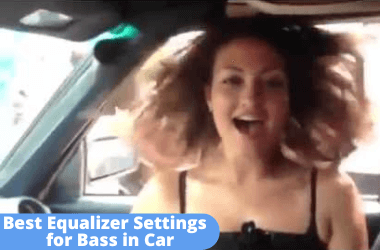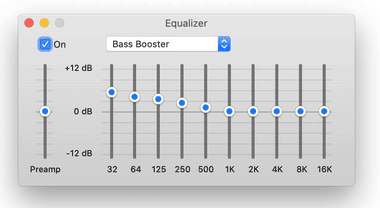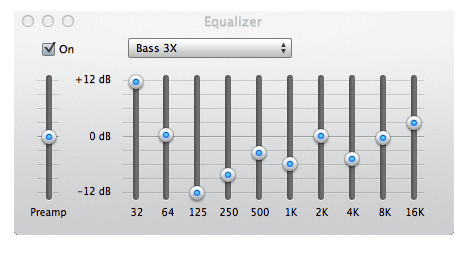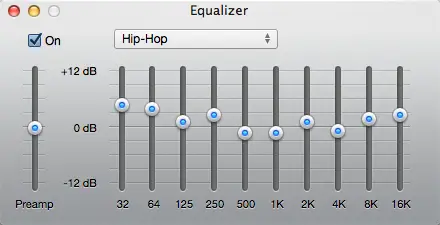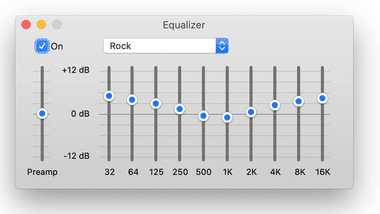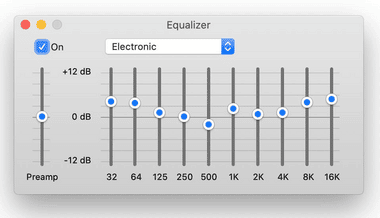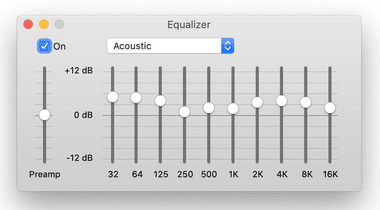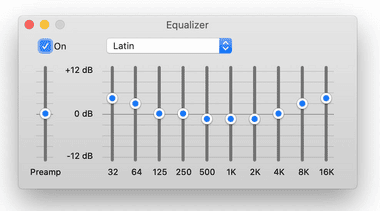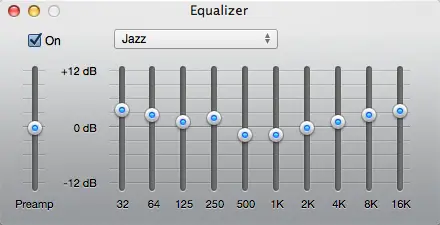The Best Equalizer Settings for Car Bass (Bass, Mid & Treble) – Achieve Boom!
Welcome fellow Bass Addict!
Let’s crack the code to the ultimate bass experience in your car stereo. We’re about to explore the best equalizer settings for car bass, so hold on tight!
Picture my wife and me experimenting with endless EQ mixes during our rides home. We’ve twisted every dial, tweaked each frequency, pausing only for pizza and coffee refills. Now, we’re excited to share our bass boost equalizer settings secret recipe with you.
Mastering the perfect bass isn’t just about the ‘bass boost’ button. It involves getting to know different music genres and fine-tuning the eq settings for bass so every drumbeat hits just right.
Be prepared; once these equalizer settings for bass are in place, every drive morphs into an impromptu jam session (don’t turn red lights into stage lights, though!). With this new wisdom, your daily commute won’t be dull anymore.
So, are you ready, best bass equalizer settings? Let’s dive deep into the realm of profound, resonant bass! We’ll unveil the best equalizer settings for bass and clarity, perfect for balancing your car audio bass, mid treble.
Show it to me already!
[lwptoc]
The Best Equalizer Settings for Bass in the Car (bass boost equalizer settings)
Since Bass Exists between 20hz and 200hz this is the range we need to optimize.
Best Bass Equalizer Settings
Psst, this is a secret. Using the settings below you can get a 3x bass boost simply by tweaking a few dials. Enjoy the bass.
Best Equalizer Settings for Different Music Genres:
1. Hip-Hop Equalizer Settings for Bass
2. Rock Equalizer Settings for Bass
3. Electronic Equalizer Settings for Bass
4. Pop Equalizer Settings for Bass
5. Acoustic Equalizer Settings for Bass
6. Latin Equalizer Settings for Bass
7. Jazz Equalizer Settings for Bass
8. Piano Equalizer Settings for Bass
What Is an Equalizer? How Does an Equalizer Work?
The art of adjustment is all about listening to the sounds coming from the track. Obviously, some seem louder to the human ear than the others even though they have the same energy.
Certain sounds seem softer when they are closer to or hearing range which is from 20 to 20,000 Hz. Add to this the fact that our equipment and rooms (or the car in this case) are in different shapes and sizes. So, you can play the same track in different places or speakers and get different outputs.
An equalizer helps you tune the sound just the right way so that in a given space and with certain equipment, all the sounds at a frequency seem “equalized” to the ear.
Initially, these were only used for theatres and outdoor spaces that were not built taking acoustics into account. This doesn’t always work so well because some places are better suited to bass dominant tracks and it will cause feedback.
Read: How to Bridge a 4 Channel Amp
But typically, the best equalizer settings for a car ensure that a particular track plays the way it should in a given space and the equipment. This is a big part of live music shows but it’s also become an integral part of playing music even in more intimate settings like a car.
Equalizing is helpful because you can’t move the speakers or change the shape and layout inside the car. So, you must cut and boost some frequencies to make sure that you get the best possible output.
How Is It Done?
The best equalizer settings for music always depend on the settings your equipment has. Most EQs come with a range or a band. And in a car, you are likely to have a dual-band equalizer. This helps you boost and cut low and high ranges of frequencies which are commonly referred to as treble and bass.
You know you have a good sound system if there are more than three bands. You could have as many as 12 bands. Professional arrangements have 20 to 30 bands.
Each band gives you control over a few frequencies. As the bands keep increasing, you get more divisions in the hearing range which in turn gives you more control over the sound.
These bands are isolated using audio filters which are near the central band, typically shaped like a bell. If you are dealing with a hardware system, adjusting the EQ settings might be tougher than usual.
But nowadays, there are a lot of graphic equalizers that have knobs to adjust the music till you hit the best EQ settings for a car.
Setting up an Equalizer in Your Car (best eq settings for car)
This is a tough job if you don’t know what you are looking for. But it is an easy one to rectify. To begin with, you need a real-time analyzer or RTA tool. You can download an app for it on your phone and it will help you measure sound.
Then you need to get another app which is a pink noise generator. Sometimes, this comes with the RTA app so check it before you download a separate one.
A pink noise generator will give you all the frequencies in the human hearing range. Play the noise and run the RTA to see all the frequencies and how they are acting which will be shown in the form of a curve. Ideally, there should be no gaps between frequencies and there probably won’t be because you are running the noise app.
Now, even if there is a gap, it should only be a 3 dB gap. The 32 Hz frequencies should be on the higher parts of the curve, the 120-4,000 Hz frequencies will be almost entirely level and the 8,000-16,000 Hz frequencies will be near a dip in the curve.
You look for these frequencies on your equalizer and adjust them till the reading on the RTA graph is even.
It’s fairly simple with a dual-band EQ. If you have a three-band EQ, you will have to be careful because each band handles many frequencies. This means you must start with a bass boost on your amplifier, gain and the placement of your subwoofers.
And even after that, you will need to do some fine-tuning. In case you have a multi-band equalizer instead of a dual-band EQ, you will need to do some work with the balancing.
But any time you need to make adjustments, you need to start near the center because that is the foundation of the sound.
How to Tune Your System for the Best EQ Settings
For starters, if you are dealing with a stereo that has advanced settings like automatic EQ, time alignment and digital sound processing, you must check the instruction manual before you tamper with the default settings. But once you are familiar with the stereo, here’s what you do.
Step 1: Switch the Stereo On
Make sure the car is parked when you are tuning your stereo because it’s not like adjusting the volume which can be done when you are driving. Adjusting your stereo can be a fun thing to do but you need to take some time and focus.
Step 2: Play a Song You Know Very Well
Pick a song you know very well so that you can hear it multiple times without getting annoyed. You will be using this song as a reference point while adjusting the levels so you will end up listening to it multiple times.
While picking the song make sure it has some high notes that include cymbals and flutes. It must have a good mid-range which includes vocals, piano sounds and the guitar. And finally, it needs low notes that come from drums and bass.
Step 3: Fix the Fade
Now you need to tune the fade control which means the music should only come from the speakers in the front. Then you must adjust the balance so that you can enjoy the music. Note the settings down on a piece of paper if you have to.
Now reverse the process by allowing the output sound only from the speakers in the back and adjust the balance again. Note these settings too.
If the balance is the same for all speakers, you are good to go. If not, you need to pick what works best for you. Ideally, you should find the sound quality that balances the instruments from speakers in the front and back.
Then you must come back to the first set of settings which means the output is only from the front speakers. Now, you must adjust the output of the speakers in the back using the fade control.
At the end of this, the output track must have a good depth but it must sound like the track is playing largely from the speakers in the front. You can do this by making sure that the speakers in the back don’t have more treble than their counterparts in the front.
Step 4: Balance the Notes
Now listen to the track to make sure the low, mid and high notes are all balanced. If they don’t sound balanced, you must listen to them and adjust the EQ till you find it pleasing to the ear.
Typically, stereos have EQ presets like sound and bass boosters. Play with them to find the sound that makes your music better. This means you will be tampering with the mid-range, treble and bass settings. If your EQ comes with more settings, you must adjust them too.
You will need to find the right combination of bass boost, treble boost and cuts to get the right output. The way you know it’s balanced is to listen and make sure the high notes are clear but not hurting your ears, the mid-range notes are smooth and clear and the bass is full but not just a loud boom.
And that’s it. You’re done.
Setting equalizer for best sound?
You won’t like the answer for this question. If you want the “magical” setting for your equalizer for the best sound well you have to run it off.
Or you have to set it to flat. You see no matter how you tweak the eq settings it will distort the original sound. In my book, the perfect equalizer settings don’t exist.
Typically the best eq settings for bass are made to compensate for weak or cheap audio equipment. No matter how you are setting the equalizer for the best sound in your car there will be distortions.
Conclusions on the Best Equalizer Settings for Car Bass
There are many different ways to find the best equalizer settings for car audio. You just need to know what each of the bands on your EQ does to find the perfect sound.
And now you know where to begin and how to proceed. There isn’t one defined best EQ for a car. It’s all about how you want to feel when the track plays.
Maybe you can help me out with a small thing. Can you please share on social media on how this post helped you? It would mean a lot. Thank you.
Roger and out.
Frequently Asked Questions:
What Is the Best Setting for an Equalizer?
EQ is essentially software that works on individual frequencies. There is no one “best” setting but if you are looking for optimal sound, you should aim for flat in order to avoid distortions. That’s because tampering with the EQ means you are deviating from the original sound, the way it was recorded.
How Do I Optimize the Bass in My Car?
Turn the gain on your sub amp completely down and make sure the low-pass filter is up. Switch off the bass boost and switch on the head unit. Make sure all the tone controls are to the middle of their settings and check the output with a track that has low-, mid- and high-range notes.
What Frequency Should I Boost My Bass?
In general, the frequencies range from 20-160 Hz. When you want to boost the bass, the best range is 50-80 Hz which makes it sound powerful and full.
What are the best equalizer settings for car audio?
The best equalizer settings for a car audio depend on the listener’s personal taste, but some equalizers have presets that can be used as a starting point. Bass boosters and sound enhancers are normally good starting points for equalizer settings.
What are the best equalizer settings for car audio bass mid treble?
The best equalizer settings for a car audio bass mid treble should be used only as a starting point for your personal equalizer settings. Equalizers are best used when combined with other tools to fine tune sound, such as adjusting frequencies.
What do treble mid bass boosts do?
Treble boosts make high frequencies louder while attenuating low frequencies, while bass boosting makes low frequencies louder and attenuates higher frequencies. Mid-frequency boosting allows for a balance between bass and treble.
What is the best car equalizer?
The best car equalizer is a subjective matter, but car audio equalizers have presets that can be used as a starting point for personal adjustments. Sound enhancers and bass boosters are often good starting points for equalizer settings.
Which are the best car stereo equalizer settings?
The best car stereo equalizer settings are subjective, but presets for sound enhancers and bass boosters are often good starting points for equalizer settings. Car stereo equalizers vary so the best settings depends on the individual stereo system.
Where can I find the right equalizer settings for bass?
There are several different methods to find the right equalizer settings for bass. A good starting point is to use presets on an equalizer such as sound enhancers and bass boosters, or to use flat EQ settings.
What are the best bass settings for equalizer?
Turn the gain on your sub amp completely down and make sure the low-pass filter is up. Switch off the bass boost and switch on the head unit. Make sure all the tone controls are to the middle of their settings and check the output with a track that has low-, mid- and high-range notes.
What are the best eq settings for car audio?
The best equalizer settings for car audio depend on the listener’s personal taste, but some equalizers have presets that can be used as a starting point. Bass boosters and sound enhancers are normally good starting points for equalizer settings.
What is the best car equalizer?
The best car equalizer is a subjective matter, but car audio equalizers have presets that can be used as a starting point for personal adjustments. Sound enhancers and bass boosters are often good starting points for equalizer settings.
What are the best bass boost equalizer settings?
The best EQ setting to optimize your listening experience depends on what type of music you’re listening to and how much boom you want out of your system. Typically, it’s ideal to start off by using flat EQ or testing out preset sound enhancer/bass booster options before making any significant tweaks to find your sweet spot in terms of volume levels and distortion control across different musical genres.
Which equalizer setting is best for bass Spotify?
What Is an Equalizer?
An equalizer is a device or app that can boost, cut or otherwise adjust the frequency response of audio equipment. It is used to compensate for differences in room acoustics and speaker placement, as well as to modify sound qualities like treble, mid-range and bass.
How Do I Optimize the Bass in My Car?
Optimizing the bass in your car will depend on your stereo system and its settings – but typically involves turning down the gain on the sub amp and ensuring that both low and high-pass filters are up. You should also turn off any “bass booster” settings before adjusting tone controls to middle settings. Finally, check the output using a track with low-, mid- and high-frequency notes.
What Frequency Should I Boost My Bass?
When boosting bass frequencies, it’s best to focus on 50 – 80 Hz which will make it sound full and powerful without causing too much distortion or feedback. Generally speaking, most sounds have bass frequencies between 20 – 160 Hz so adjusting this range is key when boosting bass levels from your EQ.
What Are The Best Car Stereo Equalizer Settings?
The best car stereo equalizer settings are subjective since everyone has their own desired sound profile. However, using presets such as ‘sound enhancers’ or ‘bass boosters’ can be a good starting point when beginning adjustments to personal taste – taking into account all the components of one’s car audio system including speakers, amplifiers and frequencies of music genres playing through them.
Where Can I Find The Right Equalizer Settings For Bass?
Depending on what type of music you’re playing, there are several methods for finding right equalizer settings for bass: Use preset options such as ‘bass booster’; start at flat; use tone control adjustments; experiment with treble boosts/cuts; pay attention to mid range frequencies; observe if rear speakers need more adjustment with fade control; play around with digital equalizers where possible – the list goes on! Ultimately though, it takes some trial & error until you find a combination of settings that works best for you & your car audio system!
What Do Treble Mid Bass Boosts Do?
Treble boosts increase loudness at higher frequencies while attenuating lower ones whereas a bass boost increases loudness at lower frequencies while attenuating higher ones. When boosting mids you get an overall balanced effect between treble & bass without affecting either excessively (but potentially requiring extra fine tuning).
What Is The Best Setting For An Equalizer?
There is no one “best” setting when it comes to equalizers since they are best used to adjust sound qualities and compensate for differences in room acoustics & speaker placement. Adjusting EQ settings can deviate from the original recording and often result in distortions – so aim for flat as your starting point instead!
How Are Best Equalizer Settings For Music Genres Achieved?
Best equalizer settings for music genres depend on the speaker system & equipment in question and can require some fine tuning. To begin with, try playing a track that has low – mid-range & high notes while adjusting tone controls to find your desired sound as well as utilizing presets such as sound enhancers or bass boosters. Also take into account EQs with multiple bands if available – enabling more control over the spectrum of frequencies!
What are some benefits of using an equalizer?
Using an equalizer can help you customize the sound of your car sound system. You’ll be able to fine-tune and balance the sounds coming out of all your speakers, boosting certain frequencies for particular music genres or even personal taste. This will help maximize your audio experience with better sound quality.
What is a parametric equalizer?
A parametric equalizer is a tool used in adjusting the frequency response of audio equipment. It differs from a graphic EQ in that it allows for more precise control over individual frequencies instead of broad frequency bands, allowing for greater flexibility when adjusting sound levels and mixing music.
How does an equalizer work?
An equalizer works by selectively cutting or amplifying different parts of the frequency range to improve sound clarity and overall balance. In simpler terms, it adjusts which frequencies you hear – reverb, raise treble notes and lower basses among other things – depending on what kind of audio system you have and the type of music being played.
What are high pass filters?
High Pass Filters (HPF) are one type of filter used by audio engineers to amplify or attenuate higher frequencies within an audio signal while not affecting lower ones. The goal is often to reduce unwanted noise at low frequencies while simultaneously preserving important details at higher ones like vocal tones or cymbals in rock music, making them ideal for car speakers as they boost mid-range sounds before hitting the head unit’s digital equalizers settings .
Can I adjust my EQ settings myself?
Yes, you can adjust your own EQ setting if you understand how it works; however if you don’t know what each band does it’s best to consult a professional who can adjust everything properly in order to get the most accurate results possible and ensure good sound quality .
Which settings should I use for bass heavy music?
When playing bass heavy music such as hip hop or electronic dance music (EDM), set your high pass filter so that all frequencies below 80 Hz are cut off. Then increase treble above 8kHz and increase bass between 50-80Hz with minimal boosts beyond that range unless desired otherwise . This should give you good sounding bass without compromising clarity in other parts of the frequency range .
Last Updated on October 23, 2023 by Brian Beasley

